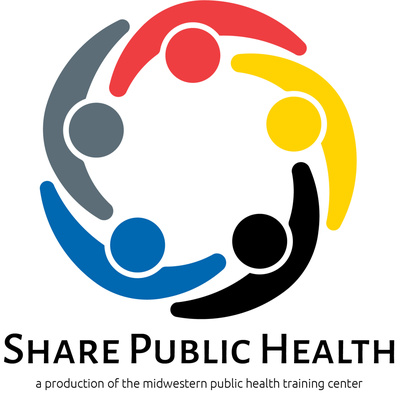 Volunteer Management for Public Health
Volunteer Management for Public Health
This UMPERLC-developed course is intended for public health agencies who may need to utilize volunteers in both emergency and non-emergency situations. The course includes information on how to handle spontaneous volunteers; the use of volunteer agencies; the Medical Reserve Corp; DMATs; the process of recruiting, screening, and training volunteers; volunteer retention; and licensure and privileging and liability issues.
 Volunteer Training: First Steps
Volunteer Training: First Steps
The Upper Midwest PERLC developed this 15-minute training course for potential public health volunteers. After successfully completing the course, learners will be able to: Describe various roles volunteers play in the response to a disaster or other public health emergency; Describe what trianing is required to enable a volunteer to function safely and effectiely in an emergency response; List reasons why it is important for an individual who wishes to volunteer become affiliated with an agency or organization incorporated into disaster resonse; Describe issues to consider when choosing an agency or organization with which to affiliate; Describte DMAT's, the MRC, and various VOLAGs, in general and in reference to the types of volunteers needed and the type of commitment required; Explain the imporatance of only registering as a volunteer with only one agency or organization; Describe how potential volunteers are screened; Describe how credentialing and liability issues work in terms of volunteers in an emergency response and the benefits of healthcare professionals
 Volunteer Training: Stress Management
Volunteer Training: Stress Management
A disaster is a traumatic event for members of the affected community and can have a negative impact on mental health. It is not only the victims who can suffer from traumatic stress. Emergency responders can suffer from it as well. It is vital for individuals involved in the emergency reponse to manage their stress to whatever degree possible, in order to maintain the safety of themselves and others as they carry out their duties. Th egoal of this 15-minute training course is to explain how a traumatic event affects people, familiarize learners with the symptoms of traumatic stress, both during the event and afterwards, and to provide methods to manage stress.
 Volunteer Training: Personal Protective Equipment
Volunteer Training: Personal Protective Equipment
In emergency or disaster response, volunteers may need to perform tasks that place them at risk for hazardous exposure. Personal Protective Equipment (PPE) is specialized clothing or equipment worn for protection against hazardous substances or infectious materials. This 15-minute course was developed by the Upper Midwest PERLC.
 Volunteer Training: Incident Command System (ICS)
Volunteer Training: Incident Command System (ICS)
The Incident Command System is an organizational structure that enables multiple agencies to work together under one management system for all incicdents requiring emergency response. Public Health agencies will use this system, as weill all other agencies collaborating in the emergency response. The goal of this 15-minute training course is to explain how the ICS works and how volunteers fit into it.
Volunteer Management: Dispatch and Demobilize Volunteers
Volunteer management is the ability to coordinate the identification, recruitment, registration, credential verification, training, and engagement of volunteers to support the jurisdictional public health agency’s response to incidents of public health significance. This course from TECS-Preparedness and Emergency Response Learning Center will teach the basic skills necessary to dispatch volunteers. Topics will include pre-deployment briefings, managing volunteer stress and tracking volunteers at an emergency site. The course will also cover demobilizing volunteers. Topics will include out- processing volunteers, recognizing volunteer contributions and evaluating volunteer performance. This eLearning course should take approximately one hour to complete.
Volunteer Management: Notify, Organize, and Assemble Volunteers in an Emergency
This course is the second in a series of three from the TECS-Preparedness and Emergency Response Learning Center. This course will teach the basic skills necessary to notify volunteers. Topics will include creating a written plan for communicating with both pre-affiliated and spontaneous volunteers and preparing volunteers for the incident site. The course will also cover organization and assembly of volunteers. Topics will include identifying the types and number of volunteers needed, working with other groups, Volunteer Reception Centers, and managing spontaneous volunteers. It should take approximately one hour to complete.
Volunteer Management: Coordinating Volunteers
Volunteer management is the ability to coordinate the identification, recruitment, registration, credential verification, training, and engagement of volunteers to support the jurisdictional public health agency's response to incidents of public health significance. This course is the third in a series from TECS-Preparedness and Emergency Response Learning Center. It will teach the basic skills necessary to coordinate volunteers. Topics include: creating a written plan, recruiting, interviewing, and developing partnerships. The course will provide an overview of organization, notification, assembly, dispatch, and demobilization of volunteers in an emergency. The course should take 1 hour to complete.
IS-244: Developing and Managing Volunteers
The goal of this FEMA course is to strengthen abilities to prepare for and manage volunteers before, during, and after a severe emergency or major disaster. This course provides strategies for identifying, recruiting, assigning, training, supervising, and motivating volunteers. It includes discussion of spontaneous volunteers as well as those affiliated with community-based, faith-based, and nongovernmental organizations (NGOs). Estimated time for completion is 4 hours.




